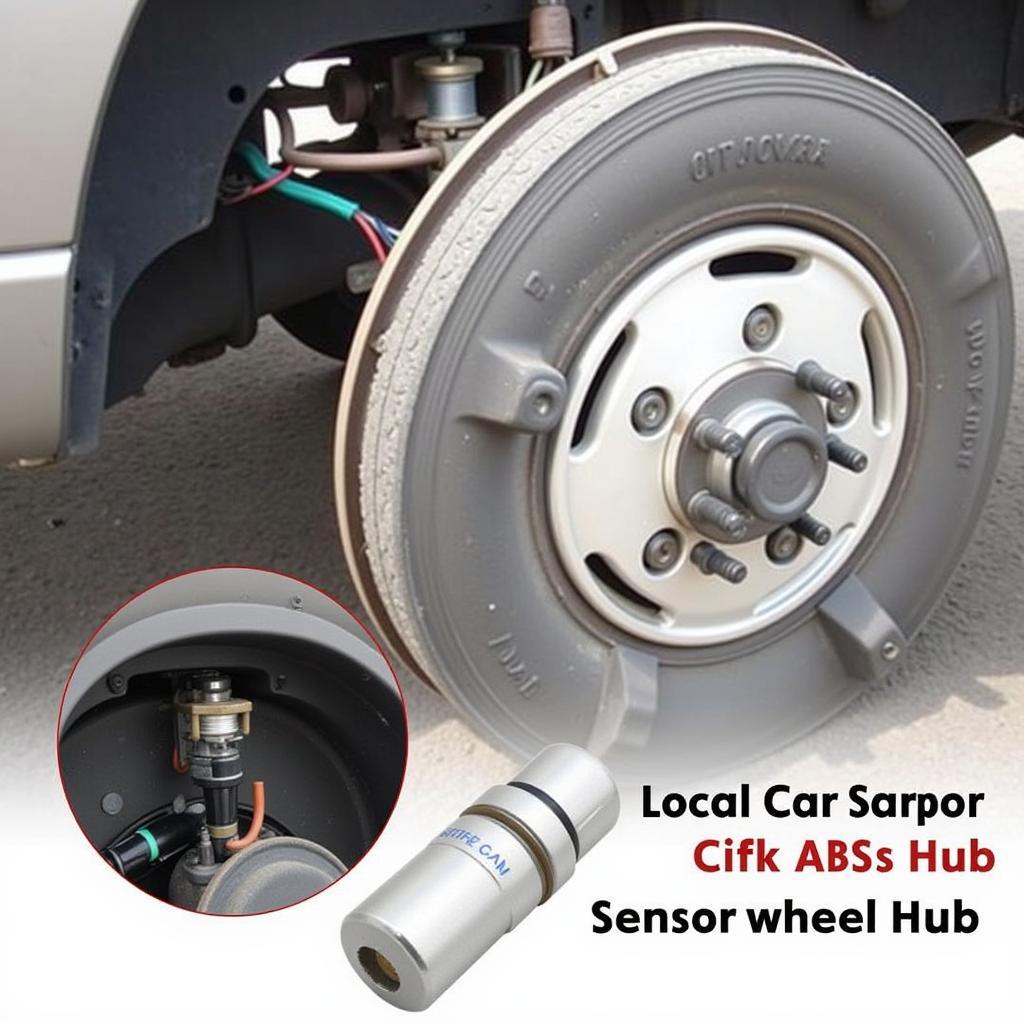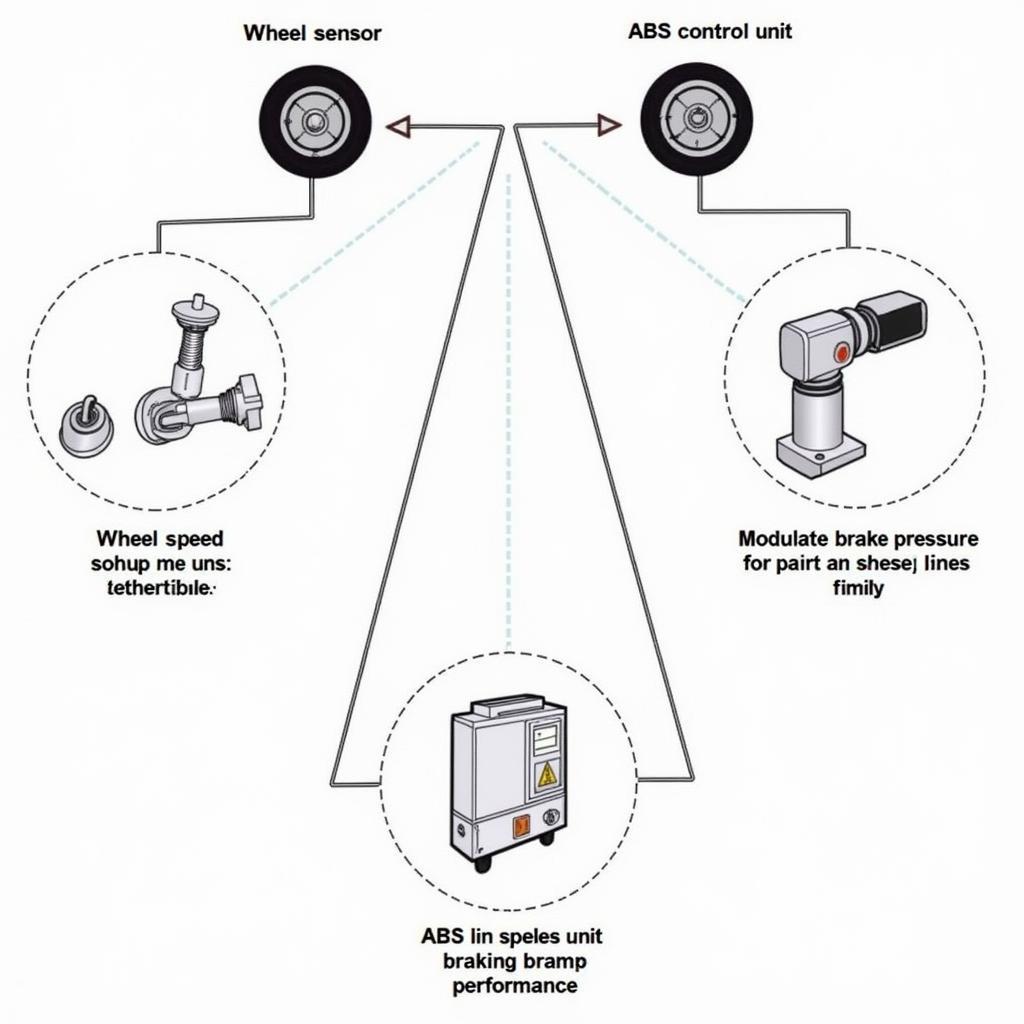The brake warning light on your 2003 Ford Windstar dashboard is a crucial safety feature. When illuminated, it signals a potential issue within your braking system that requires immediate attention. Ignoring this warning could lead to reduced braking performance and increase the risk of an accident. This comprehensive guide will delve into the common causes of a 2003 Ford Windstar brake warning light and provide potential solutions to help you address this issue effectively.
Common Causes of a 2003 Ford Windstar Brake Warning Light
Several factors can trigger the brake warning light in your Windstar. Let’s explore some of the most prevalent culprits:
1. Low Brake Fluid Level
One of the most frequent reasons for the brake warning light to activate is low brake fluid. Brake fluid is the lifeblood of your braking system, transmitting the force you apply to the brake pedal to the wheels, ultimately stopping your vehicle. Over time, brake pads wear down, leading to a decrease in brake fluid level.
What to do: If you suspect low brake fluid, check the level in the brake fluid reservoir located under the hood. If it’s below the minimum mark, adding brake fluid might temporarily extinguish the warning light. However, it’s essential to visit a qualified mechanic to diagnose the underlying cause of the fluid loss, such as a leak in the brake lines.
2. Worn Brake Pads
Brake pads are designed to wear down over time as you use them to stop your vehicle. When the brake pads reach a certain level of wear, the brake warning light will illuminate to alert you that it’s time for a replacement.
What to do: If your brake pads are worn, you’ll need to have them replaced by a mechanic. Driving with worn brake pads not only reduces your braking efficiency but can also damage the brake rotors, leading to more costly repairs.
3. Faulty Brake Light Switch
The brake light switch, located near the brake pedal, activates the brake lights when you press the pedal. A malfunctioning brake light switch can also trigger the brake warning light.
What to do: If your brake lights aren’t working correctly (either staying on constantly or not illuminating at all), it’s likely that the brake light switch is the culprit. Replacing a faulty brake light switch is a relatively straightforward repair for a qualified mechanic.
4. ABS System Malfunction
The Anti-lock Braking System (ABS) is a crucial safety feature in your 2003 Ford Windstar. It prevents the wheels from locking up during hard braking, providing better control and stability. If the ABS system detects a problem, it will illuminate the brake warning light along with the ABS warning light on your dashboard.
What to do: Diagnosing an ABS system issue requires specialized diagnostic equipment. If you suspect a problem with your ABS, it’s essential to take your Windstar to a qualified mechanic who can diagnose the specific problem using a code reader and perform the necessary repairs.
 ABS Sensor Location on a 2003 Ford Windstar
ABS Sensor Location on a 2003 Ford Windstar
Troubleshooting Tips: Before You Head to the Mechanic
While it’s always recommended to consult a qualified mechanic for any brake-related issues, here are a few basic checks you can perform:
- Check your parking brake: Ensure the parking brake is fully released.
- Inspect brake fluid level: As mentioned earlier, check the brake fluid level in the reservoir.
- Visually inspect brake lines: Look for any signs of leakage or damage to the brake lines running from the master cylinder to the wheels.
Important Note: Remember, these checks are for preliminary assessment only. If the brake warning light persists, don’t hesitate to seek professional help.
Conclusion
The brake warning light in your 2003 Ford Windstar should never be ignored. By understanding the common causes and taking prompt action, you can maintain a safe and reliable braking system for your vehicle. Whether it’s a simple fluid top-up or a more complex ABS repair, addressing brake issues promptly ensures your safety and that of your passengers. Remember, when it comes to brakes, erring on the side of caution is always the best approach.


